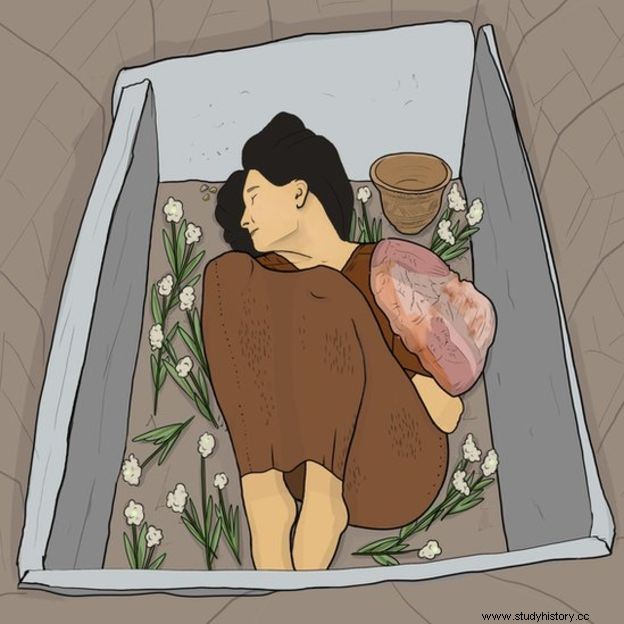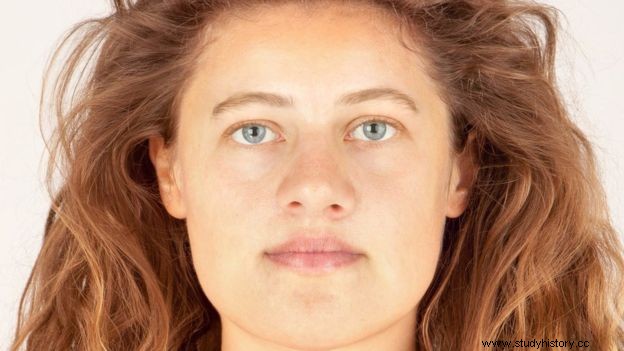In 1987, the remains of an Early Bronze Age woman who died 4,250 years ago were discovered in a rock-cut tomb at the Achavanich megalithic circle in Caithness, Scotland.
Analysis of his DNA showed that he was descended from European emigrants who came to Britain a few generations before his birth, but also details about his physical characteristics, such as that he likely had brown eyes and black hair, and that he was lactose intolerant. .
Now, a new study led by the archaeologist Maya Hoole and published in the Proceedings of the Society of Antiquaries of Scotland, provides new data on its appearance, while at the same time going back the dating of the remains (at first it was thought to be about 3,700 years old). ).

The analysis of the genomic data has resulted in a facial reconstruction of Ava (as she was called) by the forensic artist Hew Morrison, who introduces some changes compared to the previous one (where Ava was interpreted with red hair and blue eyes).
The reason for the change is that the new data provided by DNA analyzes carried out by experts from the Natural History Museum in London and Harvard Medical School allow greater precision in Ava's physical features.
The fact that her ancestors are considered to have been migrants from Northern Europe follows from the few genetic connections that have been found to the local population of Caithness in Neolithic times. Also of the objects found in the burial, which place it within the Beaker Folk culture, which began in the Chalcolithic and spread throughout Europe until the beginning of the Bronze Age.

At the time of her death Ava was between 18 and 25 years old, she lived in a wooded area where hazel, pine and birch trees abounded. Her diet was rich in meat, so her community owned cattle. According to Maya Hoole Ava was a healthy young woman who probably did physical work. We don't know what caused her death but the way she was buried suggests that great care was taken in creating her grave. .
The new reconstruction keeps Ava's facial features the same as the old one, darkening her eyes, skin tone, and hair.
